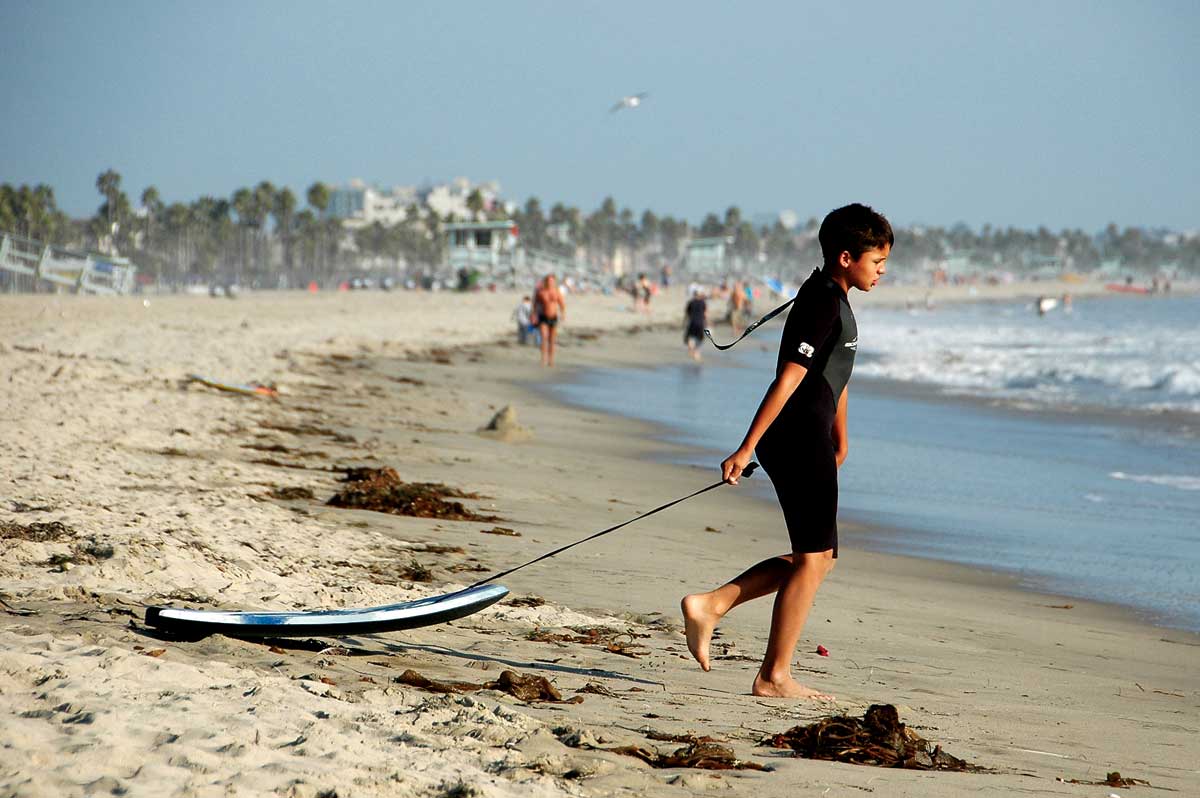SANTA MONICA BAY — Rain eased a lot of dire problems last week, but pollution in the bay wasn't one of them.
When it rains for the first time in a long time it helps with the current drought but all the pollution on the ground makes its way into the ocean. Longtime beachgoers know the rule of thumb: wait three days before swimming after a storm. On Monday, The Los Angeles County Department of Public Health put out an advisory warning swimmers to stay out of the water until Wednesday at 1:30 p.m. — about three days after the storm subsided.

Experts are suggesting that might be too soon.
A study from Heal the Bay, a Santa Monica-based nonprofit, and UCLA environmental science students released following last week's storm shows that beaches impacted by storm drains, like Santa Monica's, can remain a health risk for five days and beyond.
"Exposure to bacteria from runoff can cause a variety of illnesses, most frequently respiratory infection and stomach flu," said Heal the Bay officials in a release. "Human pathogens of unknown origins can also be carried down gutters."
For enclosed beaches, like Mother's Beach in Marina del Rey, that don't get as many waves as open beaches, the water often remains unhealthy for 10 days and beyond, researchers found. Santa Monica doesn't have any enclosed beaches.
Victor Shaw, a surfer who works at ZJ Boarding House, a surf shop on Main Street, said that he's been noticing it anecdotally for years.
"It could take five days or a week depending on the conditions," he said.
Shaw's come down with sinus infections and eye infections after surfing in the bacterial soup.
"There's trash floating around," he said. "There's murkiness in the waters. You definitely notice it."
If the surf's good, which it often is after a rain, the pollution doesn't stop Shaw.
"You learn ways to mitigate it," he said. "You can wear earplugs and things like that."
They discourage customers from renting boards up to three days after a storm, he said, and if the experts are recommending five days then they would consider following suit.
Emily Flavin, 13, a member of Lincoln Middle School's surf team, was bummed that she had to take a few days off.
"The runoff goes directly from storm drains to where I surf so I can't surf for several days after," she said. "It's sad because I love surfing."
She wasn't fond of possibly having to wait five or even 10 days either.
"I'd hate it," she said in an e-mail. "The pollution not only affects sea life, it also affects our fellow citizens. It's like an Olympic runner not being able to run for 10 days. That's not cool!"
The water quality data analysis looked at pollution levels from the last seven years. The beaches around the Santa Monica Pier were found to be impacted by storm drains. Researchers looked at the 32 beach sites most frequently monitored in L.A. and Orange counties for the 10 days following a storm.
They found that rainfall over a half inch made the water at enclosed and storm drain-impacted beaches unhealthy for longer than the county's advisories allowed. The impacts were small on open beaches.
County health officials could not be reached for comment.
"The UCLA study indicates that the 3-Day Rule may not be adequate to protect the health of all ocean swimmers," said Amanda Griesbach, a Heal the Bay scientist, in a release. "Until the rule is modified, swimmers are better protected by avoiding storm drain-impacted and enclosed beaches for (five to) 10 days after a storm."
Tourists, often drawn to the city's world-class beaches, spent $1.5 billion in the city by the sea in 2012.
"It's notable for Santa Monica because it's not even three days after the rain and it's sunny out, it's nice on the beaches," said Lily Tsukayama, a UCLA graduate who worked on the project last June. "It's not like it's freezing out and people aren't going to want to be out there."
Heal the Bay recommends that the counties extend their advisories.
They also recommend standardizing the beach-monitoring programs, noting that many are not checked weekly during the rainy winter months. Some counties measure the water right in front of storm drains while others monitor up to 100 yards away.
Tsukayama encourages swimmers to check Heal the Bay's Beach Report Card online. It grades various beaches along the West Coast based on water sample reports. As of Tuesday afternoon, the area around the pier was receiving a failing grade from the organization. The report cards can be viewed at www.beachreportcard.org
dave@www.smdp.com









